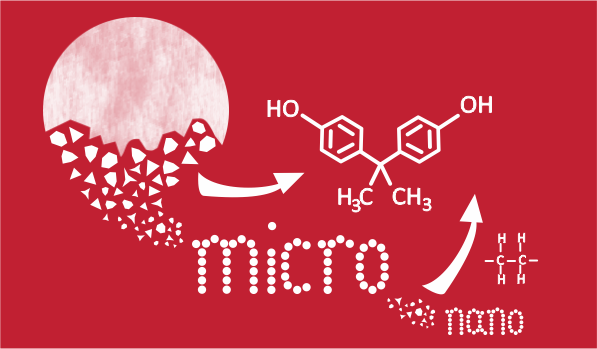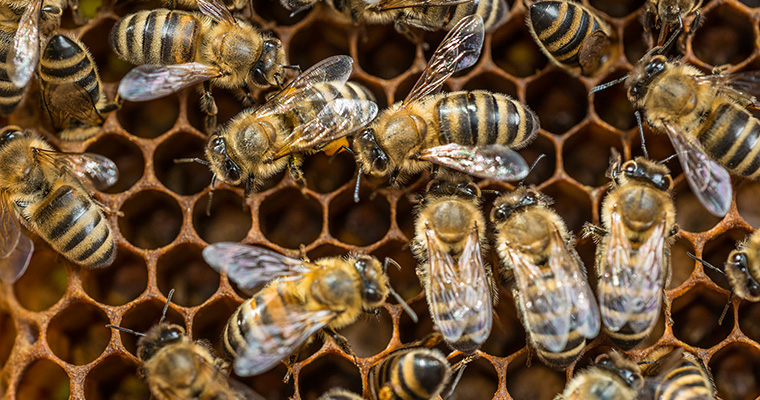
Research Unit
Chemicals in the Environment
Mission: Safe chemicals and healthy environments in a changing world
Modern society develops, produces, uses and spreads a huge and increasing diversity of chemicals and materials. Amongst them are pesticides, pharmaceuticals, plastic materials and chemical additives, and a large range of industrial chemicals including persistent, bioaccumulative and toxic ones such as per- and polyfluoroalkyl substances (PFAS). Humans and ecosystems are exposed to complex mixtures of these compounds. Closely interacting with other environmental crises such as climate change, biodiversity loss and a shortage of clean water resources, chemical pollution has adverse impacts on human and environmental health. The mission of the Research Unit “Chemicals in the Environment” is to provide scientific innovation and interdisciplinary solutions for
- safe and sustainable chemicals that do not pose risks to humans and the environment supporting a circular economy and
- a healthy non-toxic environment for humans and ecosystems under changing climate, hydrological and socio-economic conditions.
In this, our tools and models as well as our infrastructures/platforms play key roles.
Our contribution: Innovative science for sustainable solutions
Hundreds of thousands of chemicals in use lack sound scientific data on adverse effects to humans and wildlife, underlying mechanisms of toxicity and knowledge on persistence and fate. To pave the path towards safe and sustainable chemicals we unravel mechanisms of effects on cells, organisms (including humans) and ecosystems and investigate the transformation of chemicals. We develop in vivo, in vitro and in silico new approach methodologies (NAMs) that provide mechanistic information and have the potential to replace animal testing. We apply the developed high-throughput NAM-based strategies to evaluate large numbers of individual chemicals, products as well as defined and undefined mixtures to support the identification of safe and sustainable chemicals. These strategies involve modern computational methods using machine learning and artificial intelligence (AI).
To safeguard a healthy and non-toxic environment for humans and ecosystems we develop novel comprehensive monitoring strategies addressing complex mixtures of hazardous chemicals in the environment, in organisms and the human body. These strategies involve cutting-edge analytical screening tools for complex mixtures and trace analysis of challenging compound groups such as very polar and mobile compounds and nanoplastics. We use high-throughput effect-based methods to characterize hazardous mixtures. Extensive monitoring campaigns, mixture modeling, advanced data science and the interdisciplinary collaboration with scientists from other Research Units allows us to assess exposure and risk from the local to the continental scale and from water resources to human cohorts.
Our research for safe and sustainable chemicals and a non-toxic environment relies on a comprehensive unique research infrastructure. This infrastructure is based on advanced chemical analytical and bioanalytical instrumentation and methods, mesocosms, human and ecotoxicological model systems and modern data science and modelling.
Maximal coherence and efficiency of our research infrastructure is achieved in (bio-)analytical platforms such as CITEPro and ProMetheus. CITEPro is a platform for high-throughput sample preparation, the automated exposure of cell cultures and aquatic organisms, and the automated analysis of the effects and chemical concentrations for large numbers of chemicals, human and environmental samples. ProMetheus – a central bioinformatics and omics platform – enables the generation, qualitative and quantitative management of big data sets and information about cells, genes, proteins and metabolites and makes this information accessible.
We collaborate with national and international partners of various disciplines with a focus on Europe to maximize the impact of our research. To this end, we take leading roles in large scientific networks such as the Science-Policy Interface NORMAN (https://www.norman-network.net/ ) and the European Research Partnership PARC (https://www.eu-parc.eu/) and provide policy advice for the negotiation of the UNEP Global Plastics Treaty.
A close information exchange with national and international committees, authorities and institutions that are responsible for assessing chemicals is a prerequisite for transferring knowledge and results into practice. The broad spectrum of professional expertise in system-, cell- and ecotoxicology, epigenetics and molecular systems biology as well as unique analytical and bioanalytical competence and facilities make the UFZ a sought-after partner and expert for the scientific community, authorities and chemical industry.
The German Environment Agency (UBA), the Federal Institute for Risk Assessment (BfR), the Institute for Environment and Sustainability (IES) of the European Commission’s Joint Research Centre (JRC), the European Food Safety Authority (EFSA) and the Environmental Protection Agency (EPA) in the USA are important strategic partners in our endeavor to achieve a non-toxic environment, safeguarding healthy people in a healthy environment.
News
Highlights from the Research Unit
The Research Unit “Chemicals in the Environment” is one of the most important associated partners in the EU PARC initiative for the assessment of risks posed by chemicals, with the aim of protecting human health and the environment and strengthening research and innovative capacities. Important contributions are innovative monitoring tools for chemical mixtures in the environment, new methods for risk assessment of mixtures and solutions for data engineering and integration.

The Microplastics Competence Cluster at UFZ investigates various aspects of macro-, micro-, nanoplastics and associated chemicals in the environment from a wide range of perspectives, including environmental chemistry, eco-/human toxicology and risk assessment. Numerous third-party funded projects are involved.


The research projects DaNa4.0, MANTRA and P-LEACH investigate as sub-prjects of the Microplastics Competence Cluster the effects of novel materials such as nanoplastics and microplastics on the environment and health, developing reliable testing strategies to assess their safety.
For more information on microplastics research at UFZ: Microplastics Competence Cluster


Plant protection products in the environment are partly responsible for the progressive loss of biodiversity. The Nationwide Monitoring of Small Streams (KgM) project provides a quantitative assessment of the influence of pesticides from diffuse agricultural sources on small and medium-sized streams.
In a two-year pilot study, we investigate the impact of pesticides and their ecological consequences at 70 monitoring sites throughout Germany each year.

The Pacific expedition of the MICRO-FATE project investigates the occurrence and fate of microplastics in the sea. The five-week expedition of the research vessel SONNE took the scientists from Vancouver to Singapore.




